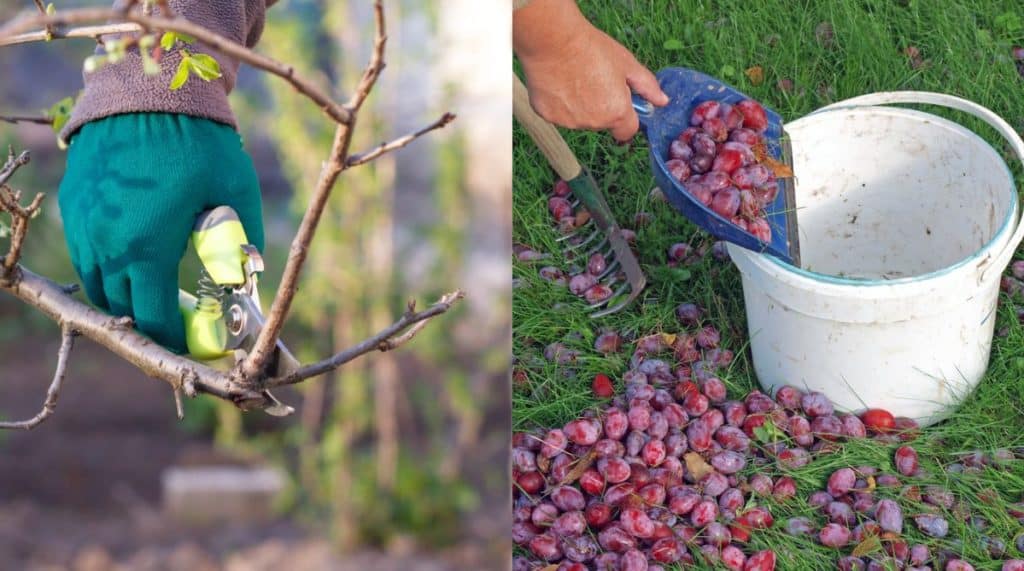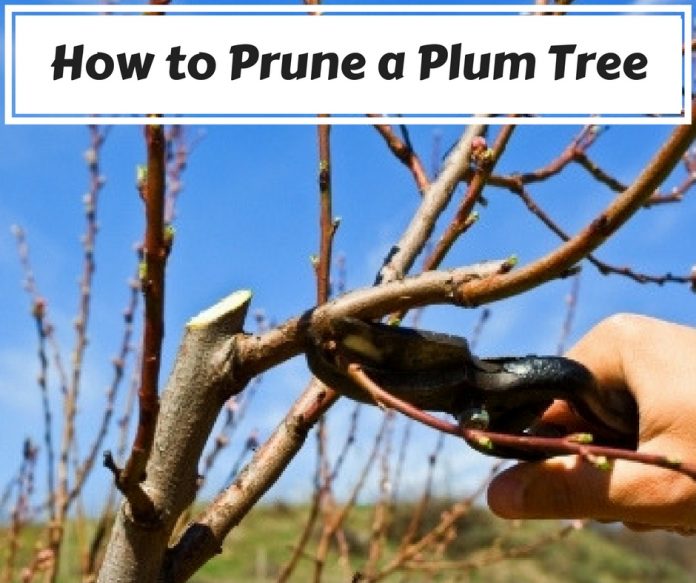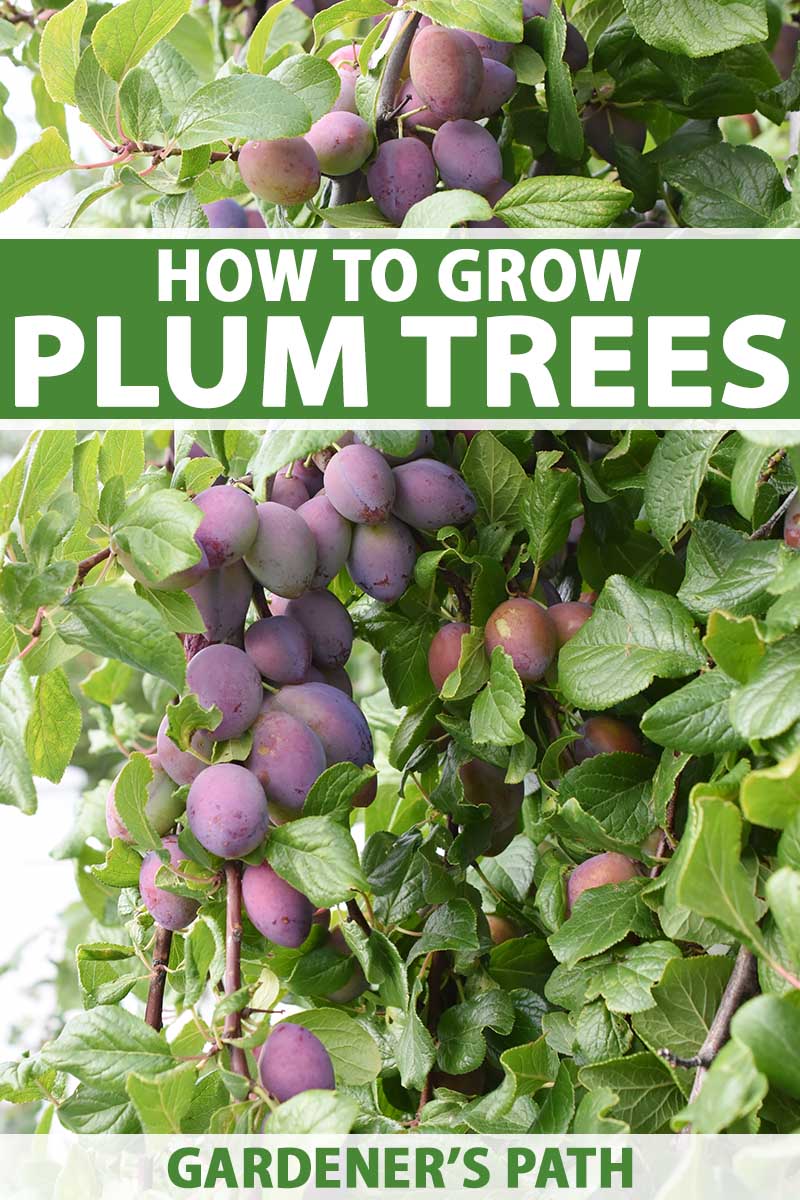Understanding the Importance of Timing in Plum Tree Pruning
Pruning plum trees is an essential maintenance practice that can significantly impact the tree’s overall health, fruit production, and pest management. However, pruning at the wrong time can lead to reduced yields, increased disease susceptibility, and even tree death. To avoid these negative consequences, it’s crucial to determine the best time to trim plum trees. The ideal pruning time varies depending on factors such as tree age, climate, and growth stage, but generally, pruning during the dormant season is recommended.
Pruning plum trees during the dormant season, typically from late winter to early spring, offers several benefits. This period allows for the removal of dead, diseased, or damaged branches, promoting healthy growth and reducing the risk of disease and pest infestations. Additionally, pruning during the dormant season helps maintain the tree’s shape and size, making it easier to manage and harvest. Furthermore, pruning at this time enables the tree to heal quickly, reducing the risk of infection and promoting a strong, vigorous growth response.
On the other hand, pruning plum trees at the wrong time can have devastating consequences. Pruning during the active growing season, for example, can cause stress to the tree, making it more susceptible to disease and pests. Similarly, pruning too much or too little can also harm the tree, leading to reduced fruit production and increased maintenance needs. Therefore, it’s essential to understand the importance of timing in plum tree pruning and to prune at the best time to ensure optimal growth and fruit production.
By pruning plum trees at the right time, growers can enjoy a bountiful harvest, improved tree health, and reduced maintenance needs. In the next section, we’ll explore how to determine the best time to prune your plum tree, taking into account factors such as tree age, climate, and growth stage.
How to Determine the Best Time to Prune Your Plum Tree
Determining the best time to prune your plum tree depends on several factors, including the tree’s age, climate, and growth stage. Understanding these factors is crucial to ensure that pruning is done at the optimal time, promoting healthy growth and maximizing fruit production.
For young plum trees, typically those under three years old, pruning should be done during the dormant season, usually from late winter to early spring. This allows for the removal of any dead or damaged branches, promoting healthy growth and development. As the tree matures, pruning can be done during the late winter or early spring, depending on the specific climate and growth stage.
In regions with mild winters, pruning can be done in late winter or early spring, while in areas with harsh winters, pruning should be done in late winter or early spring, after the threat of frost has passed. In regions with hot summers, pruning should be done in late winter or early spring, to minimize the risk of sunburn and heat stress.
Another important factor to consider is the tree’s growth stage. During the active growing season, pruning should be avoided, as it can cause stress to the tree and reduce fruit production. However, during the dormant season, pruning can be done to promote healthy growth and fruiting.
When determining the best time to prune your plum tree, it’s also essential to consider the specific pruning goals. For example, if the goal is to promote fruit production, pruning should be done during the dormant season, to allow for the development of fruiting branches. If the goal is to maintain tree shape or size, pruning can be done during the late winter or early spring, depending on the specific climate and growth stage.
By considering these factors and understanding the best time to prune your plum tree, you can ensure that your tree receives the necessary care to promote healthy growth, maximize fruit production, and reduce maintenance needs. In the next section, we’ll explore the benefits of winter pruning for plum trees, including reduced risk of disease and pest infestations, improved air circulation, and increased sunlight penetration.
The Benefits of Winter Pruning for Plum Trees
Winter pruning is a crucial maintenance practice for plum trees, offering numerous benefits that can improve the tree’s overall health, fruit production, and pest management. One of the primary advantages of winter pruning is the reduced risk of disease and pest infestations. During the dormant season, the tree is less susceptible to disease and pests, making it an ideal time to prune and remove any infected or damaged branches.
Winter pruning also improves air circulation within the tree, allowing for better sunlight penetration and promoting healthy growth. This is particularly important for plum trees, as they require adequate sunlight to produce fruit. By pruning during the winter months, you can ensure that your plum tree receives the necessary sunlight to produce a bountiful harvest.
Another benefit of winter pruning is the ability to shape and maintain the tree’s structure. During the dormant season, the tree’s branches are more visible, making it easier to identify and remove any dead, diseased, or damaged branches. This helps to maintain the tree’s shape and size, promoting a strong and vigorous growth response.
In addition to these benefits, winter pruning can also help to reduce the risk of sunburn and heat stress during the growing season. By pruning during the winter months, you can remove any weak or damaged branches that may be susceptible to sunburn, reducing the risk of damage to the tree.
When pruning plum trees during the winter months, it’s essential to use proper pruning techniques to avoid damaging the tree. This includes making clean cuts, removing any dead or diseased branches, and shaping the tree to promote healthy growth. By following these techniques, you can ensure that your plum tree receives the necessary care to promote optimal growth and fruit production.
Overall, winter pruning is a critical maintenance practice for plum trees, offering numerous benefits that can improve the tree’s overall health, fruit production, and pest management. By pruning during the winter months, you can ensure that your plum tree receives the necessary care to promote optimal growth and fruit production, and reduce the risk of disease and pest infestations.
Pruning Techniques for Plum Trees: A Step-by-Step Guide
Pruning plum trees requires careful consideration and attention to detail to ensure that the tree is pruned correctly and safely. Here is a step-by-step guide on how to prune plum trees, including the tools needed, pruning cuts, and tips for maintaining tree shape and promoting fruiting.
Tools Needed:
- Pruning shears or loppers for smaller branches
- Pruning saw for larger branches
- Gloves and safety glasses for protection
Step 1: Remove Dead, Diseased, or Damaged Branches
Start by removing any dead, diseased, or damaged branches from the tree. This will help to prevent the spread of disease and encourage healthy growth. Make clean cuts just above a growth node, using a 45-degree angle to prevent water from collecting on the cut surface.
Step 2: Remove Crossing or Rubbing Branches
Next, remove any crossing or rubbing branches from the tree. These branches can cause damage to the tree and reduce fruit production. Make clean cuts just above a growth node, using a 45-degree angle to prevent water from collecting on the cut surface.
Step 3: Thin Out the Center of the Tree
Thin out the center of the tree to allow for good air circulation and sunlight penetration. Remove any weak or spindly branches, and make clean cuts just above a growth node, using a 45-degree angle to prevent water from collecting on the cut surface.
Step 4: Shape the Tree
Finally, shape the tree to maintain its desired shape and size. Remove any branches that are growing outside of the tree’s natural shape, and make clean cuts just above a growth node, using a 45-degree angle to prevent water from collecting on the cut surface.
Tips for Maintaining Tree Shape and Promoting Fruiting:
- Make clean cuts just above a growth node to prevent water from collecting on the cut surface.
- Use a 45-degree angle when making cuts to prevent water from collecting on the cut surface.
- Remove any weak or spindly branches to promote healthy growth and fruiting.
- Thin out the center of the tree to allow for good air circulation and sunlight penetration.
By following these steps and tips, you can prune your plum tree correctly and safely, promoting healthy growth and fruiting. Remember to always use proper pruning techniques and to prune at the best time to trim plum trees to ensure optimal results.
Common Mistakes to Avoid When Pruning Plum Trees
Pruning plum trees can be a delicate process, and making mistakes can have serious consequences for the tree’s health and productivity. Here are some common mistakes to avoid when pruning plum trees:
Over-Pruning:
Over-pruning is one of the most common mistakes made when pruning plum trees. This can cause stress to the tree, leading to reduced fruit production and increased susceptibility to disease. To avoid over-pruning, only remove what is necessary to maintain the tree’s shape and promote healthy growth.
Under-Pruning:
Under-pruning is another common mistake made when pruning plum trees. This can lead to a lack of air circulation and sunlight penetration, causing the tree to become weak and vulnerable to disease. To avoid under-pruning, make sure to remove any dead, diseased, or damaged branches, and thin out the center of the tree to allow for good air circulation and sunlight penetration.
Pruning at the Wrong Time:
Pruning plum trees at the wrong time can also have serious consequences for the tree’s health and productivity. Pruning during the active growing season can cause stress to the tree, leading to reduced fruit production and increased susceptibility to disease. To avoid pruning at the wrong time, prune plum trees during the dormant season, usually from late winter to early spring.
Consequences of Mistakes:
Making mistakes when pruning plum trees can have serious consequences for the tree’s health and productivity. Over-pruning can lead to reduced fruit production and increased susceptibility to disease, while under-pruning can lead to a lack of air circulation and sunlight penetration, causing the tree to become weak and vulnerable to disease. Pruning at the wrong time can also cause stress to the tree, leading to reduced fruit production and increased susceptibility to disease.
Tips for Correction:
If you have made mistakes when pruning your plum tree, there are steps you can take to correct them. If you have over-pruned your tree, you can try to stimulate new growth by applying a balanced fertilizer and providing adequate water and nutrients. If you have under-pruned your tree, you can try to thin out the center of the tree to allow for good air circulation and sunlight penetration. If you have pruned your tree at the wrong time, you can try to avoid pruning during the active growing season and instead prune during the dormant season.
By avoiding common mistakes and following proper pruning techniques, you can help to ensure the long-term health and productivity of your plum tree. Remember to always prune at the best time to trim plum trees and to use proper pruning techniques to avoid causing stress to the tree.
Pruning Plum Trees for Specific Purposes: Fruit Production, Shape, and Size
Pruning plum trees can be done for specific purposes, including maximizing fruit production, maintaining tree shape, and controlling tree size. By pruning for these specific purposes, you can help to ensure that your plum tree is healthy, productive, and well-maintained.
Maximizing Fruit Production:
To maximize fruit production, prune your plum tree to allow for good air circulation and sunlight penetration. Remove any dead, diseased, or damaged branches, and thin out the center of the tree to allow for good air circulation and sunlight penetration. This will help to promote healthy growth and fruiting.
Maintaining Tree Shape:
To maintain tree shape, prune your plum tree to maintain its natural shape and size. Remove any branches that are growing outside of the tree’s natural shape, and thin out the center of the tree to allow for good air circulation and sunlight penetration. This will help to promote healthy growth and maintain the tree’s shape.
Controlling Tree Size:
To control tree size, prune your plum tree to maintain its desired size. Remove any branches that are growing beyond the tree’s desired size, and thin out the center of the tree to allow for good air circulation and sunlight penetration. This will help to promote healthy growth and maintain the tree’s size.
Tips and Techniques:
Here are some tips and techniques for pruning plum trees for specific purposes:
- Use the right pruning tools, such as pruning shears or loppers, to make clean cuts and avoid damaging the tree.
- Prune during the dormant season, usually from late winter to early spring, to minimize stress to the tree.
- Remove any dead, diseased, or damaged branches to promote healthy growth and fruiting.
- Thin out the center of the tree to allow for good air circulation and sunlight penetration.
- Prune to maintain the tree’s natural shape and size, and to control tree size.
By pruning your plum tree for specific purposes, you can help to ensure that it is healthy, productive, and well-maintained. Remember to always prune at the best time to trim plum trees and to use proper pruning techniques to avoid causing stress to the tree.
Pruning Plum Trees in Different Climates and Regions
Pruning plum trees in different climates and regions requires consideration of local conditions, including temperature, humidity, and soil type. Understanding these factors is crucial to ensure that pruning is done effectively and safely.
Temperature:
Temperature plays a significant role in pruning plum trees. In regions with cold winters, pruning should be done during the dormant season, usually from late winter to early spring. This allows for the removal of dead, diseased, or damaged branches, promoting healthy growth and reducing the risk of disease and pest infestations.
Humidity:
Humidity also affects pruning plum trees. In regions with high humidity, pruning should be done to promote air circulation and reduce the risk of disease. Remove any branches that are growing inwards or crossing, and thin out the center of the tree to allow for good air circulation and sunlight penetration.
Soil Type:
Soil type is another important factor to consider when pruning plum trees. In regions with poor soil quality, pruning should be done to promote healthy growth and fruiting. Remove any weak or spindly branches, and thin out the center of the tree to allow for good air circulation and sunlight penetration.
Regional Considerations:
Regional considerations also play a significant role in pruning plum trees. In regions with hot summers, pruning should be done to reduce the risk of sunburn and heat stress. Remove any branches that are exposed to direct sunlight, and thin out the center of the tree to allow for good air circulation and sunlight penetration.
Adapting Pruning Techniques:
Adapting pruning techniques to local conditions is crucial to ensure that pruning is done effectively and safely. Consider the specific needs of your plum tree, including its age, climate, and growth stage, and prune accordingly.
Tips and Techniques:
Here are some tips and techniques for pruning plum trees in different climates and regions:
- Use the right pruning tools, such as pruning shears or loppers, to make clean cuts and avoid damaging the tree.
- Prune during the dormant season, usually from late winter to early spring, to minimize stress to the tree.
- Remove any dead, diseased, or damaged branches to promote healthy growth and fruiting.
- Thin out the center of the tree to allow for good air circulation and sunlight penetration.
- Consider the specific needs of your plum tree, including its age, climate, and growth stage, and prune accordingly.
By adapting pruning techniques to local conditions, you can help to ensure that your plum tree is healthy, productive, and well-maintained. Remember to always prune at the best time to trim plum trees and to use proper pruning techniques to avoid causing stress to the tree.
Conclusion: Pruning Plum Trees for Long-Term Health and Productivity
Pruning plum trees is a crucial maintenance practice that can have a significant impact on the tree’s health, productivity, and overall well-being. By pruning at the right time and using proper techniques, you can help to ensure that your plum tree is healthy, productive, and well-maintained.
Regular pruning can help to improve tree health by removing dead, diseased, or damaged branches, promoting healthy growth and reducing the risk of disease and pest infestations. Pruning can also help to increase fruit production by allowing for good air circulation and sunlight penetration, and by promoting the development of fruiting branches.
In addition to improving tree health and increasing fruit production, regular pruning can also help to reduce maintenance needs. By removing dead, diseased, or damaged branches, you can help to prevent the spread of disease and reduce the risk of pest infestations. This can save you time and money in the long run, and help to ensure that your plum tree remains healthy and productive.
By following the guidelines outlined in this article, you can help to ensure that your plum tree is pruned at the best time to trim plum trees and using proper techniques. Remember to always prune during the dormant season, usually from late winter to early spring, and to use the right pruning tools and techniques to avoid damaging the tree.
By pruning your plum tree regularly and using proper techniques, you can help to ensure that it remains healthy, productive, and well-maintained for years to come. Whether you’re a seasoned gardener or just starting out, pruning your plum tree is an essential part of maintaining its health and productivity.





:max_bytes(150000):strip_icc()/how-to-prune-plum-trees-4782376-01-ddbe6e27fa6f422ebfd40c47dfde8799.jpg)



